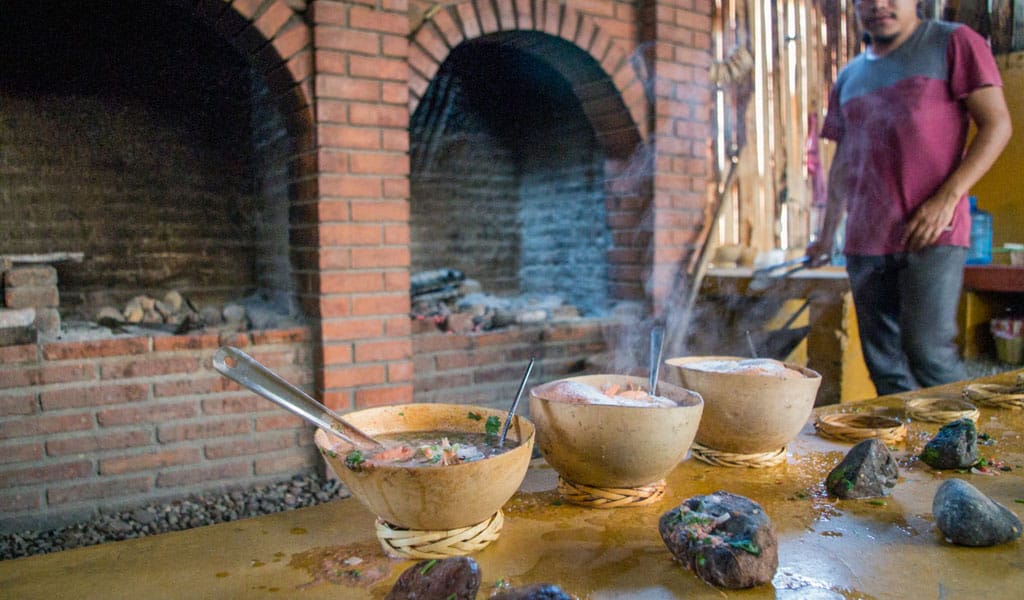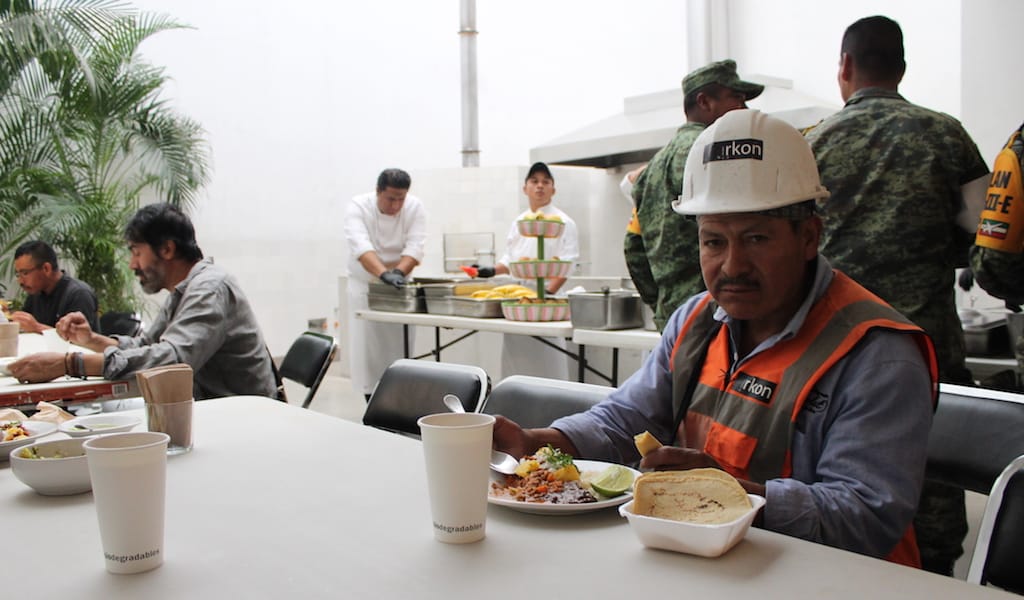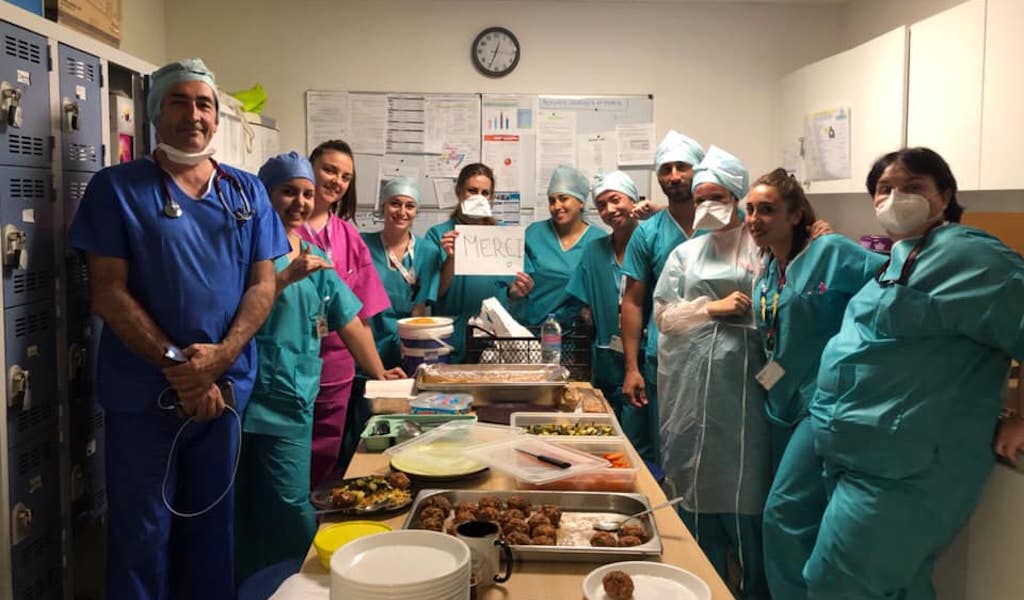In Oaxaca, a state where gastronomy is almost a religion, there are some extraordinary dishes that are prepared only for special occasions because of the complexity of preparation. Mole chichilo, for example, uses more than 30 ingredients, and its preparation can take up to 3 days.
But there are spectacularly tasty (and complex) dishes that can be had anytime. One of these is caldo de piedra (stone soup) from the Tuxtepec region. On our last visit to Oaxaca City, we visited a restaurant a few miles outside of the center whose rendition of this soup blew our minds.
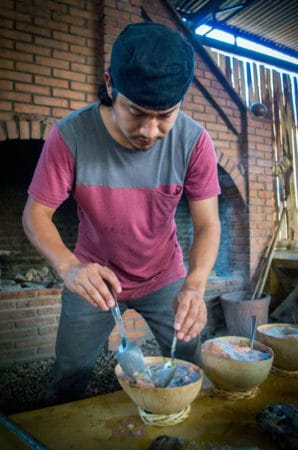 The place is located on the road that connects Oaxaca City with El Tule, a small community whose claim to fame is that it’s home to one of the largest trees on earth. Caldo de Piedra – named after the soup for which it’s famous – is both unpretentious and inviting: it’s a large hut with a palm roof, dirt floors and rustic wooden tables. The back of the restaurant is lined with two spacious wood ovens, a long concrete counter and a large comal (griddle) over a wood fire where tortillas are prepared by hand. The whole atmosphere feels like the kitchen of a grandmother at the turn of the last century.
The place is located on the road that connects Oaxaca City with El Tule, a small community whose claim to fame is that it’s home to one of the largest trees on earth. Caldo de Piedra – named after the soup for which it’s famous – is both unpretentious and inviting: it’s a large hut with a palm roof, dirt floors and rustic wooden tables. The back of the restaurant is lined with two spacious wood ovens, a long concrete counter and a large comal (griddle) over a wood fire where tortillas are prepared by hand. The whole atmosphere feels like the kitchen of a grandmother at the turn of the last century.
The menu features just a few items: quesadillas, empanadas and three different types of caldo de piedra – fish, shrimp or a mixture of both. The soup, of course, is the star of the menu. To prepare it, all the ingredients (shallots, garlic, cilantro, epazote, tomato, salt and your choice of seafood) are placed raw in a large jicara, a bowl made from the fruit of the calabash tree.
The next step is to drop a hot fist-sized stone into the bowl to cook all the ingredients. The stones are heated for two hours in an oak fire. “It is very important to use the right firewood to get the right temperature,” said Victor Gachupín, the owner’s son. The stones must reach 300 degrees Celsius to be able to cook the ingredients thoroughly. One stone is often not enough, so a second and sometimes a third stone must be placed in the bowl.
The preparation of this dish is a spectacle – but the soup itself is also much more than that. It’s traditionally been prepared by the men of the Chinanteco ethnic group (located in the north of Oaxaca) to honor the women, elderly and distinguished members of their society. Men make all the hard preparations on the basin of the Papaloapan River, while women enjoy the day with their children in the river. Using heated stones instead of cooking the soup directly over heat is a pre-Hispanic tradition that comes from that part of Oaxaca.
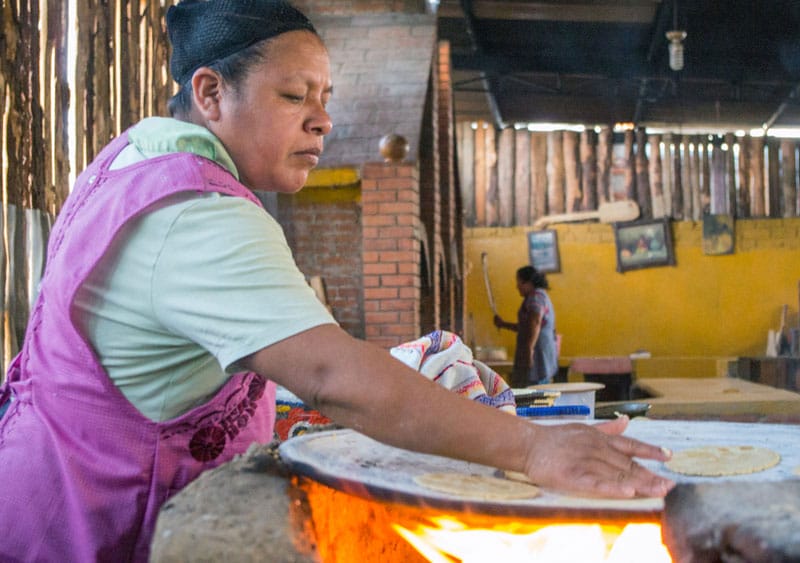
Since 1996, when they opened the restaurant, the Gachupíns have used only ingredients they grow themselves and tools brought from their native town, San Felipe Usila. The stones are hand-picked from the basin of the river and sent to the restaurant.
Like with the other ingredients used, the Gachupíns use only the “freshest” stones – the rocks can withstand the heat and the change of temperature, but after one use they are no longer strong enough to be heated up again.
 March 14, 2014 Karaköy Lokantası
March 14, 2014 Karaköy Lokantası
When Karaköy was still “the docks” and filled with shop windows advertising boat tickets […] Posted in Istanbul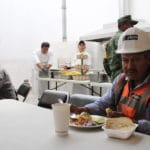 September 28, 2017 Dispatch from Mexico City
September 28, 2017 Dispatch from Mexico City
In the past five years, Mexico City has flourished as an international tourist […] Posted in Mexico City April 30, 2020 Kitchen Brigade
April 30, 2020 Kitchen Brigade
To make my 12-person quiche I need: 12 eggs, 4 cups of cream, a pound of Emmenthal and […] Posted in Marseille
Published on June 20, 2017
Related stories
March 14, 2014
IstanbulWhen Karaköy was still “the docks” and filled with shop windows advertising boat tickets to Odessa alongside cubby-sized import and export offices, Karaköy Lokantası felt like a culinary mirage. With great food, personable service and tasteful décor, this family-operated eatery stood out, prominently, among the humble street-side eateries filled with noshing stevedores. These days, snapshots…
September 28, 2017
Mexico CityIn the past five years, Mexico City has flourished as an international tourist destination, and the Roma and Condesa neighborhoods are the city’s crown jewels for travelers. A typical weekend in bohemian Roma or posh Condesa might include a late lunch of tuna tostadas at Contramar, followed by a drink at Cervecería del Barrio, a…
April 30, 2020
MarseilleTo make my 12-person quiche I need: 12 eggs, 4 cups of cream, a pound of Emmenthal and two giant bags of frozen spinach. No, I’m not on lockdown with a soccer team, nor am I hosting an illicit dinner party. I am cooking for the nighttime ER team at the Hôpital Nord. My effort…







































